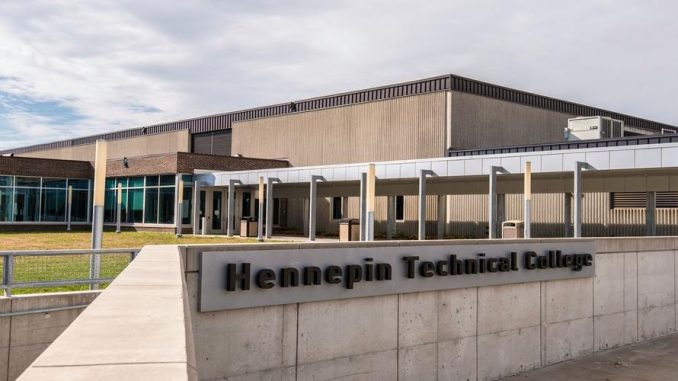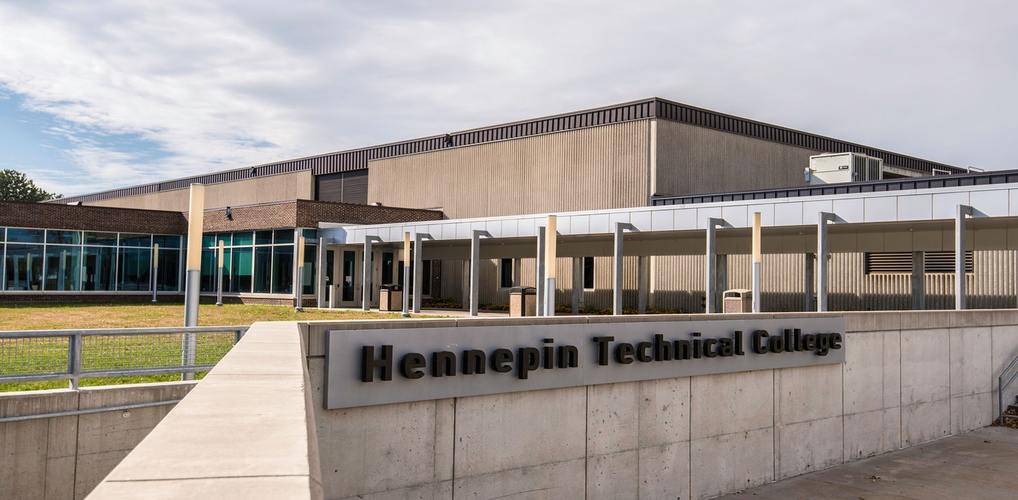

Reading time: Less than 6 minutes
Synopsis: In a recent Explorance webinar, Shannon Thomas M.B.A., Interim Dean of Technology and Institutional Research at Hennepin Technical College, discussed how the college implemented Blue to improve its course and program assessment process. This blog outlines the key steps the institution took and the challenges it faced before implementing Blue.
Now more than ever before, course and program assessments are essential for any Higher Education Institution looking to optimize the teaching and learning experience.
For assessments to be beneficial to students and college alike, they need to be consistently monitored, managed, and most importantly, measured. Student assessment of their courses and programs can be rendered useless without proper measurement because the data is not being leveraged to drive meaningful impact.
Lacking the ability and technology to measure course and program assessments properly, Hennepin Technical College (HTC) committed to Explorance’s Blue Experience Management (XM) platform as a solution. With the implementation of Blue, alongside its robust report engine and Explorance’s 24/7 world-class support, HTC can finally create a process that is efficient and effective. Here’s how they did it.
Standardizing Measurement
Before implementing Blue, HTC faculty members were performing their own course and program evaluations every three years. This periodic measurement led to a lack of efficacy regarding the data they collected. Additionally, the following challenges limited their ability to grow their measurement practices:
- Tight budget
- Limited staff
- Tool redundancy
In short, HTC could not find a replicable way to measure the outcome of its courses and programs that fed back into improvement initiatives at the institutional level. Now with Blue in place, HTC can create a standardized assessment model that proves to be extremely useful.
Flipping Program Evaluations
Using Blue’s best-in-class integration and flexibility, HTC took an interesting approach when assessing its course and program outcomes by flipping it upside down. Instead of the routine perspective where course assessments are looked at from the student point of view, HTC looks at its faculty’s perspective to see how students performed in their courses.
Working with faculty, advisors, Higher Learning Commission (HLC) accreditation, and program deans, HTC categorizes its assessment into six outcomes:
- Oral communication
- Critical thinking and problem solving
- Technological literacy
- Mathematical reasoning
- Written communication
- Scientific reasoning
Using these six categories, HTC can properly standardize and manage their assessments using Blue. The data collected is analyzed using a rolled-up effect, meaning if courses are generally meeting their quotas, the programs those courses are in are considered to be doing well. Therefore, the institution is performing well.
“We told them [Explorance] exactly what we wanted to create. They created it and made our lives so much easier. And it was really wonderful.”
– Shannon Thomas M.B.A., Interim Dean of Technology and Institutional Research, Hennepin Technical College
Personalization of Reports
Blue’s robust reporting engine allows HTC to personalize the reports it generates and presents to stakeholders. The college separates reports into three different levels; instructor, department, and institution. By adding demographic subcategories – such as gender, ethnicity, questions – and comparing those to the institution, HTC and its faculty members can gain more granular insight into who is providing specific feedback.
The use of Blue’s dashboard allows HTC faculty members to access reports and view course assessments in real-time. Instructors or deans no longer have to wait to receive the data they need from the college’s Technology and Institutional Research team, relieving the pressures and delays to action.
Refining the Process
As HTC continued to stretch Blue’s flexibility, the college kept open communication with Blue’s Professional Services team.
“[They] have been so helpful in all of this. We have questions all the time. From the time we started using Blue until now, we’ve had a little bit of turnover, so the people who learned Blue, in the beginning, aren’t the people who are in Blue now. Having [the PS team] on your side and being able to have those conversations was really essential for us actually to find a successful way through this.”
– Shannon Thomas M.B.A., Interim Dean of Technology and Institutional Research, Hennepin Technical College
Tips for Success
Initially implemented in small groups, HTC continues to refine its assessment process using Blue. Having faculty members, deans, and even students constantly monitor survey questions ensure that the feedback being gathered maintains its value to the institution.
With the help of Blue, HTC shared the following tips that led the college to the successful assessment and evaluation process it has today:
- Start small
- Get buy-in early
- Communication
- Know your allies
- Don’t go at it alone

Reading time: Less than 6 minutes
Synopsis: In a recent Explorance webinar, Shannon Thomas M.B.A., Interim Dean of Technology and Institutional Research at Hennepin Technical College, discussed how the college implemented Blue to improve its course and program assessment process. This blog outlines the key steps the institution took and the challenges it faced before implementing Blue.
Now more than ever before, course and program assessments are essential for any Higher Education Institution looking to optimize the teaching and learning experience.
For assessments to be beneficial to students and college alike, they need to be consistently monitored, managed, and most importantly, measured. Student assessment of their courses and programs can be rendered useless without proper measurement because the data is not being leveraged to drive meaningful impact.
Lacking the ability and technology to measure course and program assessments properly, Hennepin Technical College (HTC) committed to Explorance’s Blue Experience Management (XM) platform as a solution. With the implementation of Blue, alongside its robust report engine and Explorance’s 24/7 world-class support, HTC can finally create a process that is efficient and effective. Here’s how they did it.
Standardizing Measurement
Before implementing Blue, HTC faculty members were performing their own course and program evaluations every three years. This periodic measurement led to a lack of efficacy regarding the data they collected. Additionally, the following challenges limited their ability to grow their measurement practices:
- Tight budget
- Limited staff
- Tool redundancy
In short, HTC could not find a replicable way to measure the outcome of its courses and programs that fed back into improvement initiatives at the institutional level. Now with Blue in place, HTC can create a standardized assessment model that proves to be extremely useful.
Flipping Program Evaluations
Using Blue’s best-in-class integration and flexibility, HTC took an interesting approach when assessing its course and program outcomes by flipping it upside down. Instead of the routine perspective where course assessments are looked at from the student point of view, HTC looks at its faculty’s perspective to see how students performed in their courses.
Working with faculty, advisors, Higher Learning Commission (HLC) accreditation, and program deans, HTC categorizes its assessment into six outcomes:
- Oral communication
- Critical thinking and problem solving
- Technological literacy
- Mathematical reasoning
- Written communication
- Scientific reasoning
Using these six categories, HTC can properly standardize and manage their assessments using Blue. The data collected is analyzed using a rolled-up effect, meaning if courses are generally meeting their quotas, the programs those courses are in are considered to be doing well. Therefore, the institution is performing well.
“We told them [Explorance] exactly what we wanted to create. They created it and made our lives so much easier. And it was really wonderful.”
– Shannon Thomas M.B.A., Interim Dean of Technology and Institutional Research, Hennepin Technical College
Personalization of Reports
Blue’s robust reporting engine allows HTC to personalize the reports it generates and presents to stakeholders. The college separates reports into three different levels; instructor, department, and institution. By adding demographic subcategories – such as gender, ethnicity, questions – and comparing those to the institution, HTC and its faculty members can gain more granular insight into who is providing specific feedback.
The use of Blue’s dashboard allows HTC faculty members to access reports and view course assessments in real-time. Instructors or deans no longer have to wait to receive the data they need from the college’s Technology and Institutional Research team, relieving the pressures and delays to action.
Refining the Process
As HTC continued to stretch Blue’s flexibility, the college kept open communication with Blue’s Professional Services team.
“[They] have been so helpful in all of this. We have questions all the time. From the time we started using Blue until now, we’ve had a little bit of turnover, so the people who learned Blue, in the beginning, aren’t the people who are in Blue now. Having [the PS team] on your side and being able to have those conversations was really essential for us actually to find a successful way through this.”
– Shannon Thomas M.B.A., Interim Dean of Technology and Institutional Research, Hennepin Technical College
Tips for Success
Initially implemented in small groups, HTC continues to refine its assessment process using Blue. Having faculty members, deans, and even students constantly monitor survey questions ensure that the feedback being gathered maintains its value to the institution.
With the help of Blue, HTC shared the following tips that led the college to the successful assessment and evaluation process it has today:
- Start small
- Get buy-in early
- Communication
- Know your allies
- Don’t go at it alone
